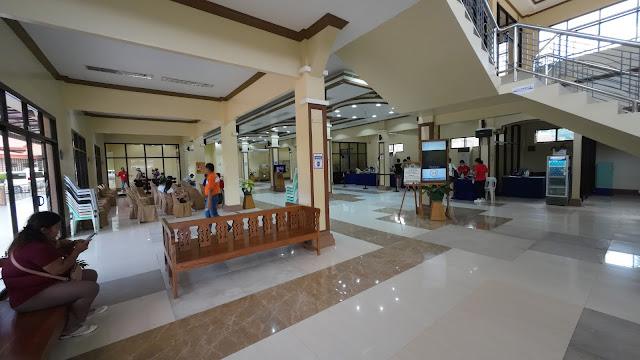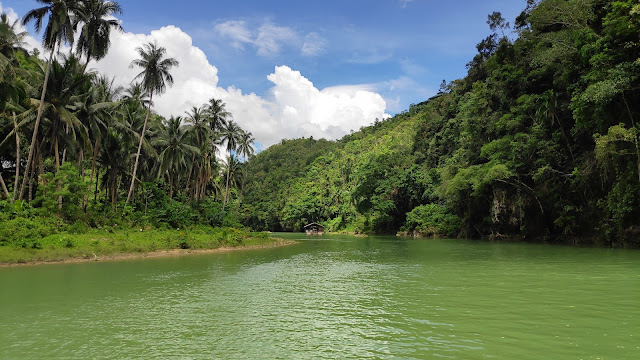Going with the Flow: Loboc River
Bohol Countryside Tour Part 2
Every now and then, we cannot help but wish for a peaceful vacation after whole weeks of getting caught up in the hustle and bustle of city life or even just working all day at home. We would daydream of just sitting amid the comfort of nature with lovely music playing in the background all the while being served with good food and a refreshing drink...
The heat of the afternoon sun finally caught up with us as we began our excursion within the island of Bohol. Early in the day, we have visited the famous Chocolate Hills, saw the miniature Philippine tarsiers, and passed by the towering trees of Bilar Manmade Forest. We haven't had a meal since we landed in Bohol. Fortunately, our itinerary would bring us to where we will have our lunch—Loboc River.
Bohol and Loboc River
Bohol is a province located in the middle of the Visayas group of islands. It is a place of rich history and beautiful natural resources as exemplified by the the Chocolate Hills, its numerous beaches, and our next destination Loboc River.
Loboc River is one of the major rivers that traverse a large portion of Bohol. Springing from the town of Carmen at the heart of the province, the river drains down south into Bohol Sea. We couldn't find official numbers, but a rough Google maps measurement would give the river a distance of at least 40 km.
Since ancient times, Loboc River has provided life to locals, providing drinking water and a navigable waterway. It is not surprising that the town of Loboc grew around the river. Today, Loboc River serves as the town's main tourist destination with regular cruises along a portion of the river aboard barges that serves as floating restaurants. The river is also a go-to place for kayaking and stand-up paddling (SUP).
Getting to Loboc River
As Loboc River was part of our itinerary, getting there had been a breeze for us. However, it is easy to get to Loboc as there are buses and jeepneys that will pass by the town on the way to Carmen. Most of the public transport hails from the Dao Terminal in Tagbilaran City, around half an hour ride away from Bohol Panglao International Airport. It will also be not difficult to arrange a tour of Bohol countryside from the numerous tricab drivers in Panglao and Tagbilaran.
Lunch at Loboc River Cruise
 |
| Interior of Loboc Tourism Complex |
 |
| Rates for the River Cruise |
 |
| Some of the local art displayed in the complex |
 |
| Barges docked at Loboc River |
 |
| Interior of the boat |
 |
| Well, we did take one... a testament to our hunger |
We also had cold cucumber iced tea as well as fruits on the side. It was a good day.
As the guests settled down as they ate lunch, the engine of the boat started to rev up and we began our navigation along Loboc River. The band began to pick up their instruments and soon we were cruising along with the music of Bee Gees playing in the background.
The river is very wide and can accommodate at least two barges on either side. The water is not crystal clear but rather has characteristic green hue. The banks for the most part are lined by shrubs and tall trees. We were thankful that the sky was clear at the time so we can admire the contrast of the green river and banks against the blue sky. Then again, perhaps the river has a certain charm that coasting along while a light drizzle falls might have also been cozy.
Every now and then, returning barges would pass us by as well as other tourists who opted to navigate the river by kayaking or by stand-up paddling.
About halfway through the cruise, we stopped by a platform on one of the banks where several locals, dressed in native attire, were waiting. A cultural presentation would be underway and shortly after, the sound of guitar rang in the air and the performance began.
 |
| Cultural presentation at Loboc River |
Partway through, the visitors were invited to participate even in the tinikling dance. Foreigners are more than willing to oblige.
 |
| Tinikling—don't get your feet trapped in those bamboo poles |
Not long after, we reached the far end of the river and we began to head back. The band continued to play their repertoire including renditions of local songs in Korean, Chinese, and Japanese.
As we made our way back, we passed by the Church of San Pedro, otherwise known as Loboc Church.
 |
| Loboc Church |








Comments
Post a Comment